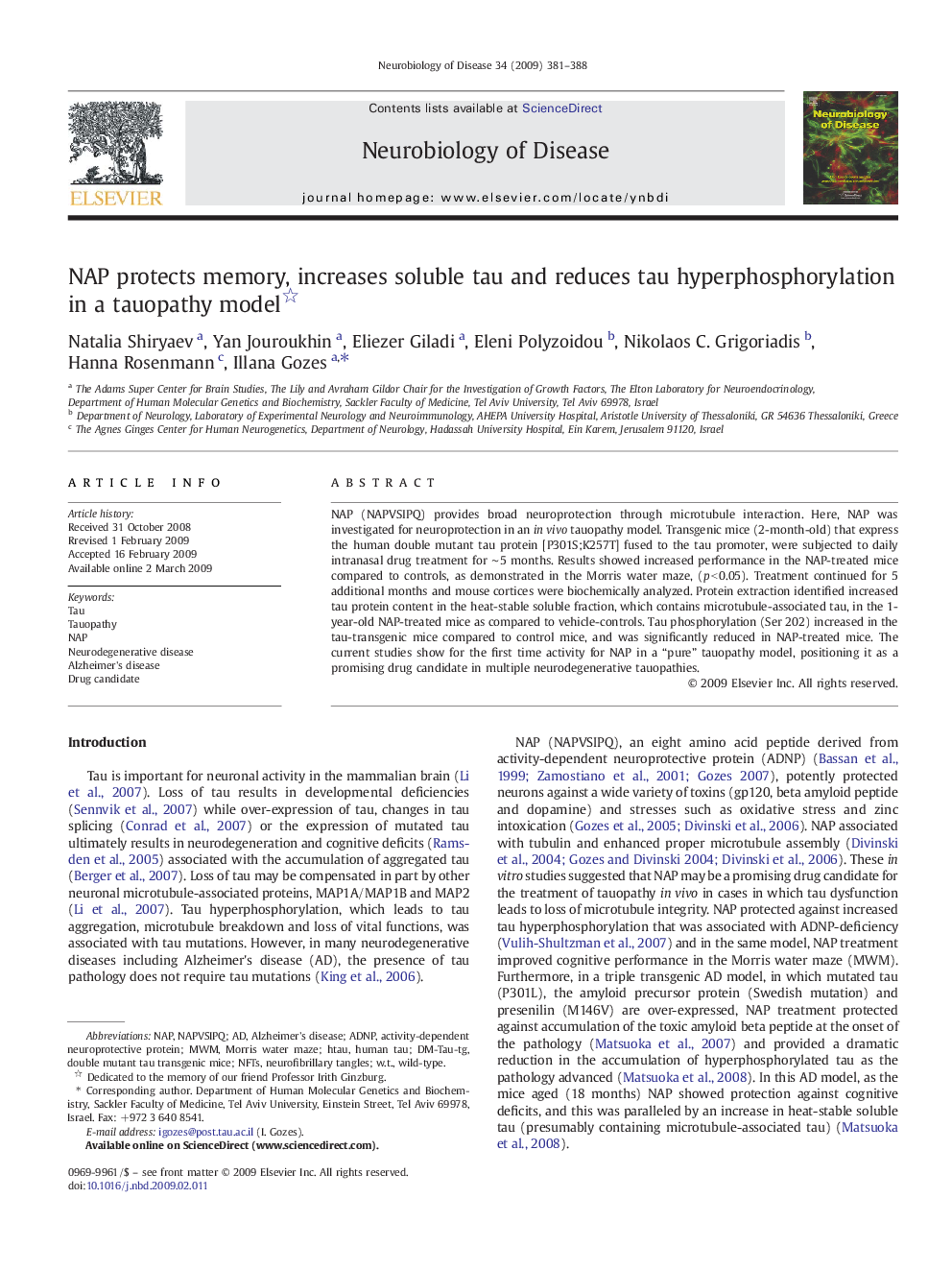| Article ID | Journal | Published Year | Pages | File Type |
|---|---|---|---|---|
| 3070098 | Neurobiology of Disease | 2009 | 8 Pages |
NAP (NAPVSIPQ) provides broad neuroprotection through microtubule interaction. Here, NAP was investigated for neuroprotection in an in vivo tauopathy model. Transgenic mice (2-month-old) that express the human double mutant tau protein [P301S;K257T] fused to the tau promoter, were subjected to daily intranasal drug treatment for ∼ 5 months. Results showed increased performance in the NAP-treated mice compared to controls, as demonstrated in the Morris water maze, (p < 0.05). Treatment continued for 5 additional months and mouse cortices were biochemically analyzed. Protein extraction identified increased tau protein content in the heat-stable soluble fraction, which contains microtubule-associated tau, in the 1-year-old NAP-treated mice as compared to vehicle-controls. Tau phosphorylation (Ser 202) increased in the tau-transgenic mice compared to control mice, and was significantly reduced in NAP-treated mice. The current studies show for the first time activity for NAP in a “pure” tauopathy model, positioning it as a promising drug candidate in multiple neurodegenerative tauopathies.
